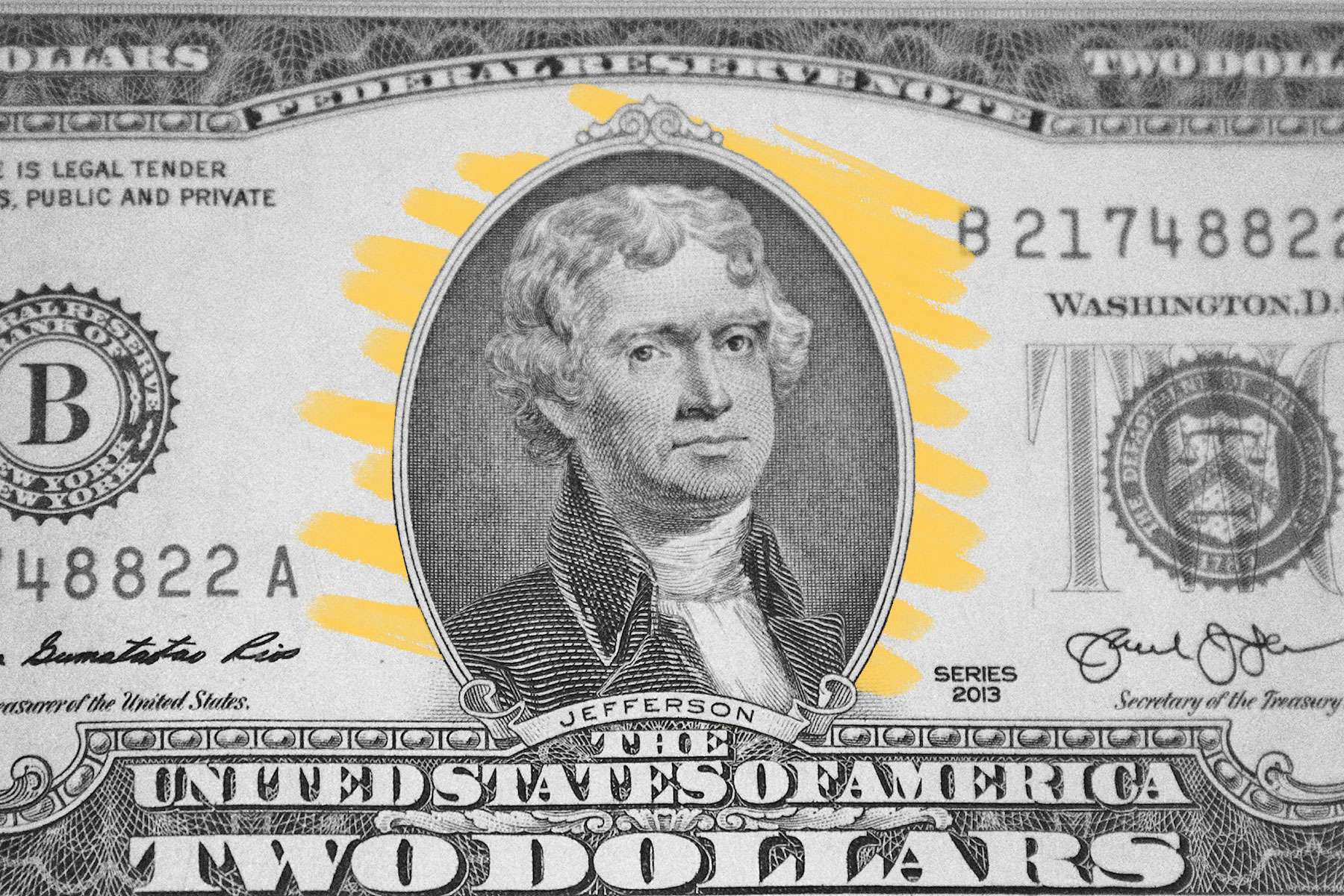$2 bills are older than the United States.
In the spring of 1775, the first shots of the Revolutionary War were fired, beginning the American colonies’ arduous journey to sever ties with the British monarchy. As the war pressed on, the colonies faced a pressing matter: They needed funds. The Second Continental Congress voted to issue bills of credit equal to 2 million Spanish milled dollars, and the first Continental Currency notes (referred to simply as “Continentals”) were born. These notes featured various denominations including the first standardized $2 bills, which were issued on May 10, 1775, more than one year before the U.S. officially declared independence on July 4, 1776.
The Continental Currency notes not only funded the war, but also symbolized a new nation in defiance of England. Founding father Benjamin Franklin was an early printer of Continentals, which were developed and printed in Franklin’s native Philadelphia. He also suggested inspirational sayings for the notes, as seen in one famous $2 bill design from 1776, which includes the motto “Tribulatio Ditat,” or “Troubles make us stronger.” That particular bill design features an image of grain being separated from the chaff. Franklin also devised a way to fight counterfeit bills by producing notes with raised patterns cast from actual leaves from trees.
The $2 bill looks very different today. The modern version was first printed in 1862 and featured a portrait of Alexander Hamilton, who established the First Bank of the United States in 1791 and served as the first U.S. Treasury secretary. Since 1869, the $2 bill has featured a portrait of Thomas Jefferson, the third U.S. president. On the reverse side is a print of John Trumbull’s painting “Declaration of Independence,” which depicts the Founding Fathers presenting a draft of the historic document to Congress.







